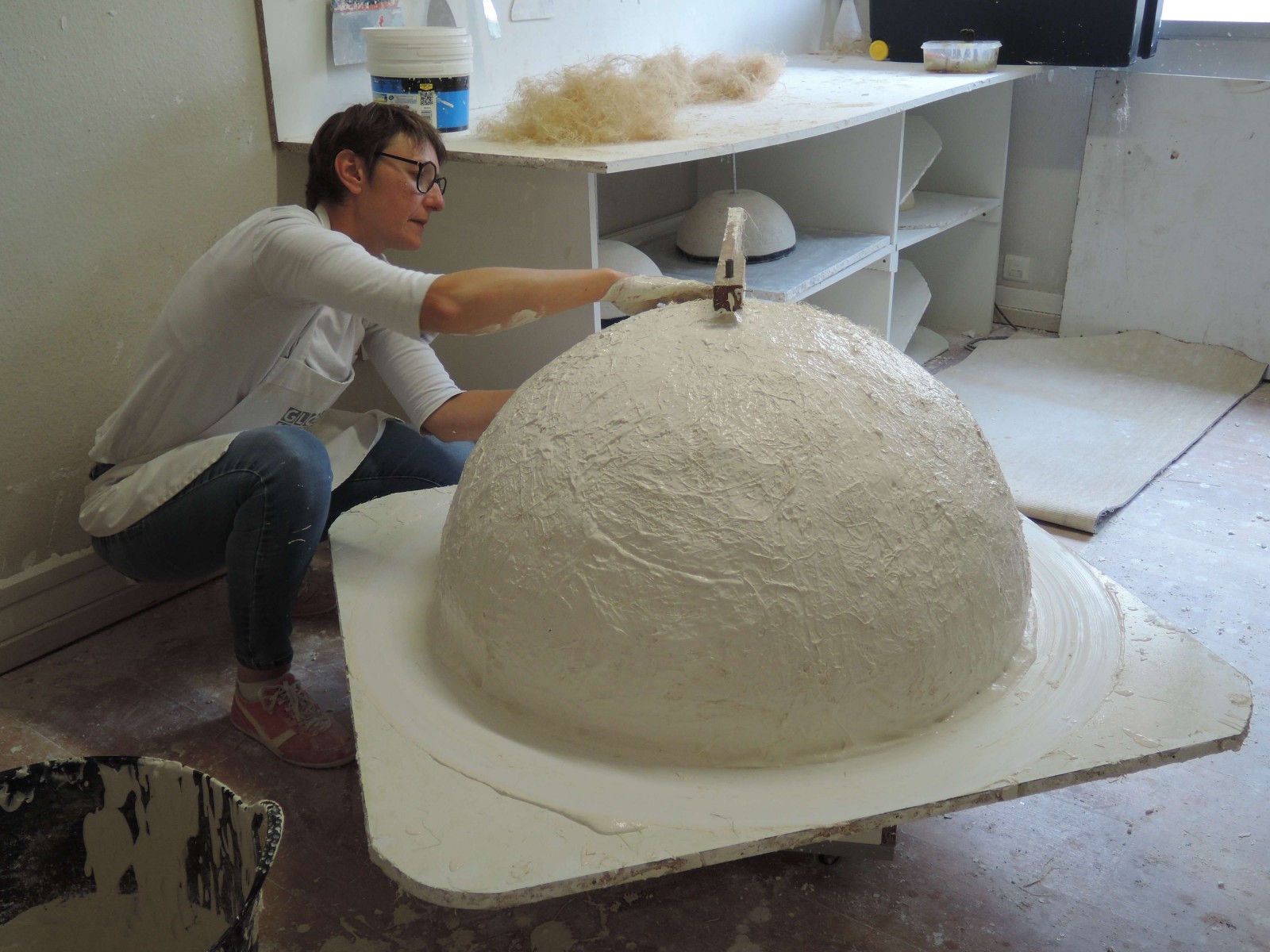Shaping the sphere
To make a globe, you first need a ball! This must be as perfect as possible because each error will be multiplied by Pi: imagine that a molding defect of 1 mm results in a difference in circumference of 3.14 mm! It may seem small but it is more than enough to be visible. Several methods can be used to create this ball. We will forget here models made of extruded plastic, used for schoolchildren globes. The Renaissance specimens were often made from a papier-mâché core covered with a thin layer of plaster, which gives them a certain lightness but also a greater fragility. There are also some globes made of glass or crystal, sometimes even mouth-blown. The advantage then being to have a translucent support which, with a suitable background map and a light device, can display a map of the physical or geopolitical world. At Globe Sauter, the globes are solely made of reinforced plaster. Why? Because we find it cool and vintage, but especially because this process allows us to get globes resistant to manipulation while having a certain mass giving you the feeling of actually carrying the earth in your hands!
